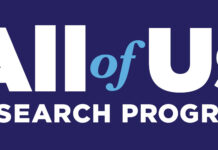SILVER SPRING, Maryland, Feb. 19, 2016 /PRNewswire-HISPANIC PR WIRE/ — February is American Heart Month. In the United States (U.S.), an estimated 56% of adults have either hypertension (high blood pressure) or prehypertension (slightly elevated blood pressure). Increased sodium intake can increase your risk of developing hypertension, which can lead to heart attacks, heart failure, stroke, kidney disease, and blindness.
Logo – http://photos.prnewswire.com/prnh/20090824/FDALOGO
To prevent or manage hypertension, the U.S. Food and Drug Administration reminds you to use the Nutrition Facts Label to check the sodium content of packaged foods and beverages.
Learn more at: http://www.fda.gov/Food/IngredientsPackagingLabeling/LabelingNutrition/ucm315355.htm
Look at the Label!
Packaged foods and beverages can contain high levels of sodium, whether or not they taste salty – so before purchasing, check the amount of sodium in the products to make informed dietary choices. Sodium content can vary significantly between similar types of foods.
- Understand the Daily Value
The Daily Values are the amounts of nutrients recommended per day for Americans 4 years of age and older. The Daily Value for sodium is less than 2,400 milligrams (mg) per day – that’s equal to about 1 teaspoon of salt. Yet on average, Americans eat about 3,400 mg of sodium a day. - Use the Percent Daily Value (%DV) as a Tool
The %DV tells you how much of a nutrient is in one serving of a food. The %DV is based on 100% of the Daily Value for sodium. When comparing and choosing foods, pick the food with a lower %DV of sodium. As a general rule:- 5% DV or less of sodium per serving is low
- 20% DV or more of sodium per serving is high
- Pay attention to serving sizes.
The %DV listed is for one serving, but one package may contain more than one serving. Be sure to look at the serving size to determine how many servings you are actually consuming.
Know the Sources of Sodium
More than 40% of the sodium consumed by Americans comes from the following 10 types of foods:
- Breads and rolls
- Cheese (natural and processed)
- Cold cuts and cured meats (such as deli or packaged ham or turkey)
- Mixed meat dishes (such as beef stew, chili, and meat loaf)
- Mixed pasta dishes (such as lasagna, pasta salad, and spaghetti with meat sauce)
- Pizza
- Poultry (fresh and processed)
- Sandwiches (such as hamburgers, hot dogs, and submarine sandwiches)
- Savory snacks (such as chips, crackers, popcorn, and pretzels)
- Soups
Watch Sodium When Eating Out, Too!
When eating away from home, ask if nutrition information is available. If a restaurant item or meal includes a claim about its nutrient content, such as “low sodium” or “low fat,” then nutrition information to support that claim is required to be available at the point of purchase. In addition, as of December 1, 2016, many chain restaurants (and other places selling restaurant-type food) will be required to provide written information on the nutrient content of standard menu items, including the amount of sodium.
Contact: Media: 1-301-796-4540 Consumers: 1-888-SAFEFOOD (toll free)






